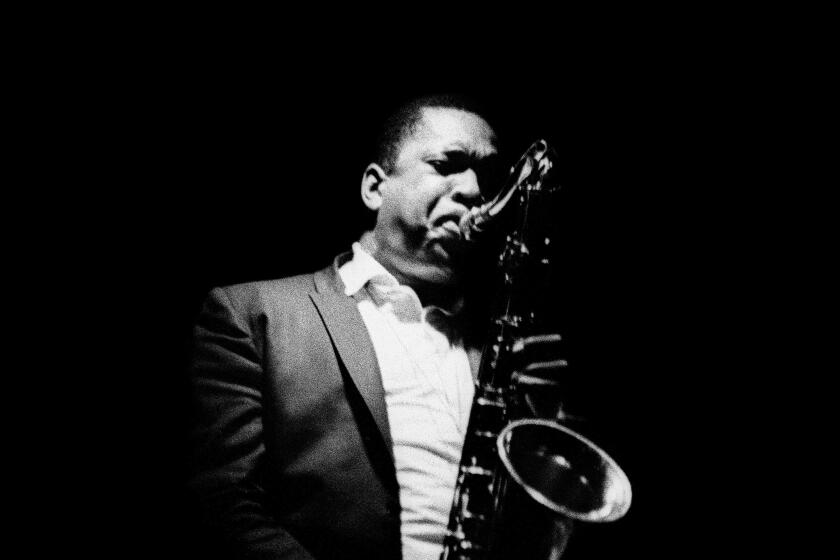These L.A. dancers are changing the way people protest

These L.A. dancers are changing the way people protest
- Share via
“We’re going to go right, left, right right,” Shamell Bell called out to a group of people learning to do “the Dougie,” a street dance created in Dallas. But they weren’t in a dance studio or at a party, they were dancing directly in front of Los Angeles Police Department headquarters.
She called it street dance activism.
This was after the August 2014 death of Ezell Ford, a 25-year-old mentally ill black man shot by police near his home. After camping out for days to demand the firing of officers involved in the shooting, activist Bell wanted to help lift spirits.
A lifelong dancer, she invited her friend, well-known L.A. street dancer Dashawn “Day Day” Blanks, to teach social dances like “the jerk” and “the reject” that had been created in black communities. Even in the face of tragedy, she found that the protesters were joyous when they danced — smiling and laughing as police officers looked on. They were dancing for one another, but more importantly, for themselves.

“Some people think I should be out there doing Alvin Ailey ‘Revelations,’” Bell says. “But some of these people are not going to connect with that. I’m connecting with what kids are doing now.”
The seeds for street dance activism were planted with the 2012 death of Trayvon Martin. After Bell learned Martin’s shooter George Zimmerman was able to walk free, she immediately headed to L.A.’s hot spot for arts and activism: Leimert Park.
“Anytime as a black artist you want to express yourself, you come to Leimert,” Bell says. “Anytime you have some type of emotional response to what’s going on to society, you come to Leimert.”
At Leimert Park, Bell and others created what would eventually become the L.A. chapter of Black Lives Matter. And as more fatal shootings caught national attention over the next few years, Bell continued teaching dance to change the way people protest. She’s taught at protests and rallies at the L.A. mayor’s house and the Pasadena Courthouse.
As a doctoral student in culture and performance, Bell ran into others who used their art for the movement, so she formed a group of dancers and artists around L.A. who fight racism, police brutality, sexism and homophobia by creating works that force people to contend with these issues. They call themselves “The Balance Collective.”

Dancer and choreographer Cherese Chambers shares a personal story.
In addition to street dances, some people like MFA students Bernard Brown and Jade Robertson choreograph pieces for a stage setting that mix contemporary dance with hip-hop and African styles. In one piece, Brown asked viewers to stand in a circle. While an audio recording of a man begging police for his life played, Brown danced in the center. He also gave several viewers slips of paper with instructions — they were to call out derogatory names when prompted.
Afterwards, participants discussed what they saw and how it made them feel.
“I’m not taking my protest to the street, but I’m asking people in the communities I travel in to grapple with these questions,” Brown says. “It’s asking people to place themselves in these situations that may happen.”
Other dancers such as Marquisa Gardner, known in the dance world as Miss Prissy, and Deidra Cooper, known as Krucial the Liberator, krump, an energetic and emotional dance born on the streets of South L.A. Krucial was part of a group of dancers who performed in front of Mayor Eric Garcetti’s house.
“It felt like I was dancing for the people who couldn’t dance no more, the people whose lives were taken away from the police,” Krucial says. “Like my ancestors were dancing to the beat of the drums and feeling it.”
Bell believes that more people should be knowledgeable about the power of dance.
By hosting street dance activism workshops in L.A. and across the country, they’re also teaching others how to use art for justice. Last year, Bell and her collective hosted a workshop at Pieter Performance Space, where around 30 people learned social dances and how they could also use their art to create change.
“I teach because it’s not about me. I wish I could fade into the background,” Bell says. “This work is about us using art as a platform to save ourselves so we can save others.”
[email protected] and [email protected]
Twitter: @makedaeaster; @stevesaldivar
More to Read
The biggest entertainment stories
Get our big stories about Hollywood, film, television, music, arts, culture and more right in your inbox as soon as they publish.
You may occasionally receive promotional content from the Los Angeles Times.











